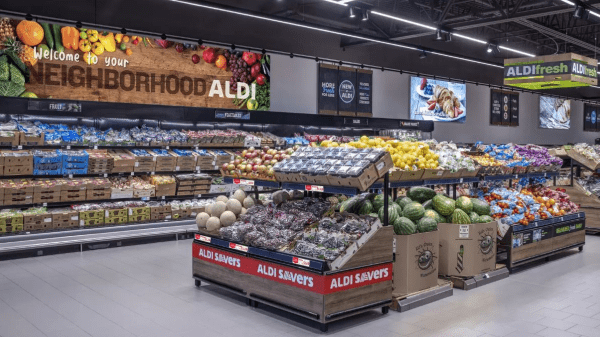A few weeks ago, Aldi BB #:116756 divested about 170 Winn-Dixie and Harveys Supermarket stores it bought in 2023 and announced plans to convert the remaining 220 Southeastern Grocers locations from the acquisition into Aldi formats, including 100 of those stores by the end of this year.
The moves are part of the discount retailer’s plans to open more than 225 stores in 2025. That’s impressive growth and a departure from its previous organic growth strategy.
What are some things we can learn from these moves?
I asked my former Blue Book colleague Pamela Riemenschneider, who is now a retail consultant, what we should expect from Aldi in 2025.
She said from the start of the acquisition, Aldi began to evaluate the stores it bought and decide which ones fit into its growth strategy. As we saw, not all did.
“The company said from the beginning it intended to keep a ‘meaningful’ number of stores operating as-is,” Riemenschneider said. “I don’t think Aldi is interested in getting into the traditional, large-format grocery business. It made the most sense to sell what they didn’t want.”
But she said it doesn’t mean they were looking to learn much from Southeastern Grocers’ operations.
“Aldi stripped a lot of stores to nothing, and we’ve seen how Southeastern Grocers hasn’t been as successful as some other chains—so I’m not sure Aldi is looking for advice on how to run its business from Southeastern Grocers,” Riemenschneider said.
“Aldi wanted real estate and [store locations] that exist in markets where they don’t have a massive presence.”
The store locations from the original acquisition are in Alabama, Florida, Georgia, Louisiana, and Mississippi.
We don’t know what the converted Aldi stores will look like, but we will soon.
“The first round of conversions is opening soon, with about 100 of them expected in 2025,” she said. “The conversions will definitely be more Aldi than Winn-Dixie on the inside. The largest footprint stores likely went back to Winn-Dixie, though I haven’t seen any in-depth analysis of the locations.”
Aldi’s acquisition and growth has come at a time when inflation, and specifically food inflation, has strained American consumers, but Riemenschneider said Aldi’s format and strategy is one that should continue, even if the overall economy improves and takes some of that price stress away.
“This is a strategy that will endure,” she said. “The U.S. market was ripe for a discounter that can compete with mainstream retail. In the UK, for example, Aldi and Lidl are seen as equals to [upper scale] Tesco, Waitrose, and Sainsbury. The U.S. market didn’t have a discounter that wasn’t seen as ‘less-than.’”
And now they do.
Aldi opened about 120 stores last year, bringing its total to more than 2,400, and its plans are to grow to about 3,200 in the next five years, Riemenschneider said.
“Aldi set a goal to be one of the largest grocers in the United States, and it has achieved that goal with a lot of room to grow,” she said. “The company has become more aggressive in its advertising, promotions, and go-to-market strategy and is more than just a small-format deep discounter.
“There are still many underdeveloped places, so new customers will be exposed, and it will feed on itself—this is Aldi really making a push.”



